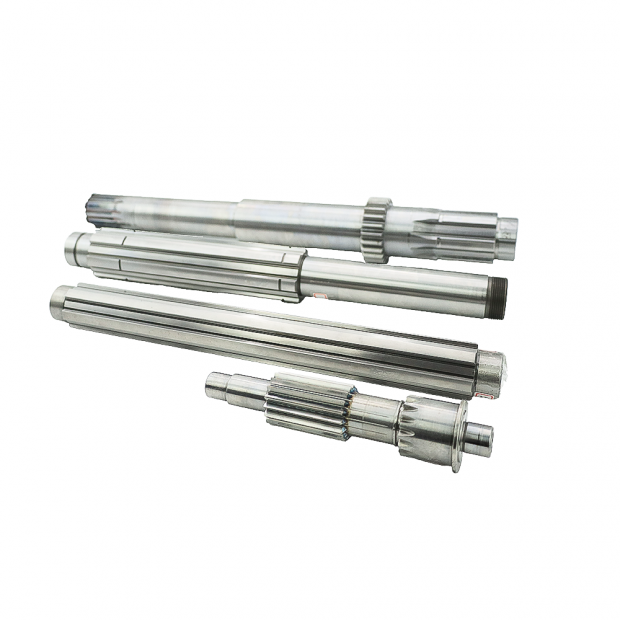Key Functions of a Gear Shaft:
- Support Gears: Provides a stable axis for gears to be mounted on and rotate around.
- Transmit Torque: Transfers rotational force from one gear to another, enabling the gear system to perform its function.
- Maintain Alignment: Ensures that gears are properly aligned and maintain correct meshing during operation.
Components of a Gear Shaft:
- Shaft Body: The main cylindrical part of the shaft.
- Keyways: Slots cut into the shaft to accommodate keys, which help to lock gears or other components in place on the shaft.
- Bearings: Support the shaft and reduce friction during rotation.
- Splines: Grooves cut along the length of the shaft, providing a means to transfer torque to or from gears and other components mounted on the shaft.
Types of Gear Shafts:
- Parallel Shafts: Used in systems where gears are mounted on parallel axes.
- Intersecting Shafts: Used in systems with bevel gears or other configurations where gears are mounted on intersecting axes.
- Non-parallel, Non-intersecting Shafts: Used in worm gear systems or other special configurations.
Applications of Gear Shafts:
- Automobiles: In transmissions, drive shafts, and differentials.
- Industrial Machinery: In conveyor systems, mixers, and pumps.
- Aerospace: In aircraft engines and control systems.
- Marine: In ship propulsion systems.
- Robotics: In joint and actuator mechanisms.
Advantages:
- Strength and Durability: Designed to handle high loads and stresses.
- Precision: Ensures accurate transmission of motion and torque.
- Versatility: Used in a wide range of applications and configurations.
Disadvantages:
- Maintenance: Requires regular inspection and lubrication to prevent wear and tear.
- Complexity: May require precise machining and assembly to ensure proper function.
- Cost: High-quality gear shafts can be expensive to manufacture and maintain.
In summary, a gear shaft is a critical component in gear systems, providing the necessary support, alignment, and torque transmission for efficient operation in various mechanical applications.










